This article is a slow moving, fine meandering, easy going, stroll through various works of art. I hope that you enjoy it, and perhaps are inspired by it to some degree. This is a general article, and no particular painter is promoted. Though, you will notice that many of the fine works by these artists are now long gone and lost in the dust-bin of history.
Head’s up to “Ohio Guy” for his awareness.
Max Seliger – Archers
Not much is known about this man. But I do really love his form and attention to the male figure. For me, I have always found it far more interesting to draw and paint the male figure as opposed to the female figure. I just never could get the curves and softness of a woman’s body correctly. However, men’s bodies were much easier to draw and paint, and far more interesting. (From an artist’s perspective.) While women’s tended to focus on the eyes, the hair, and the clothing.
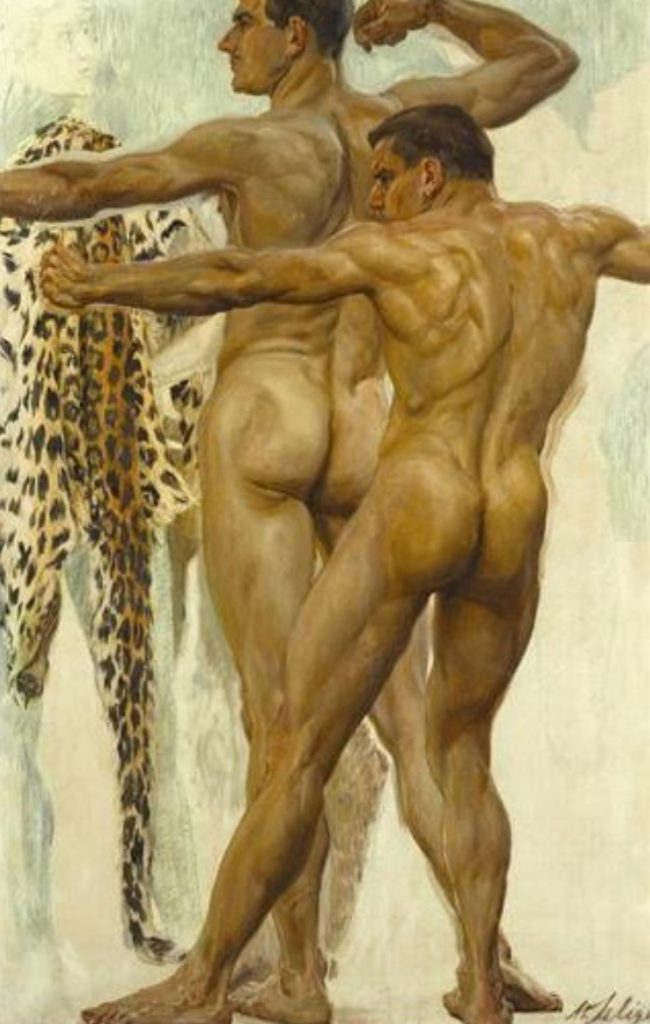
Consuelo Fould – Druidesses
Another lonely singular remaining work of art. This time of the female form. Also two figures crammed into one painting. I find it lovely. But that is just me.
You will notice that the muscle definition on the female is very subtle and soft. The smooth shading of shadows is particularly difficult to render. I worked out a technique where I would paint a lighter under panting, and then paint over it with a slightly darker flesh tone, then using a rag, I would wipe away the upper layer and then apply a wash. It’s a nice effect.
You will note that the positioning of the clothing, instruments and objects all served to cover the genitals for a very timid Victorian audience.
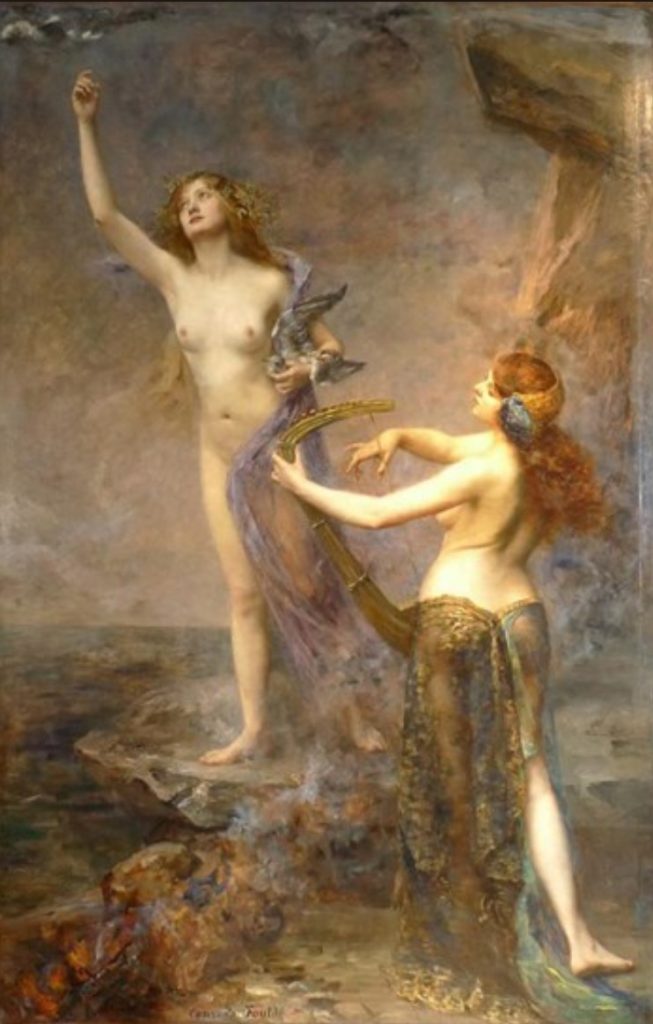
Lindsay Bernard Hall – Processional
It’s not simply the muscle tone and definition that is important in fine at, but also the clothing, the textures and the lighting. So many aspects come into play. Here’s a nice example. I think that this is a very nicely done painting. It doesn’t strike me emotionally as others do, but I find it a treasure never the less.
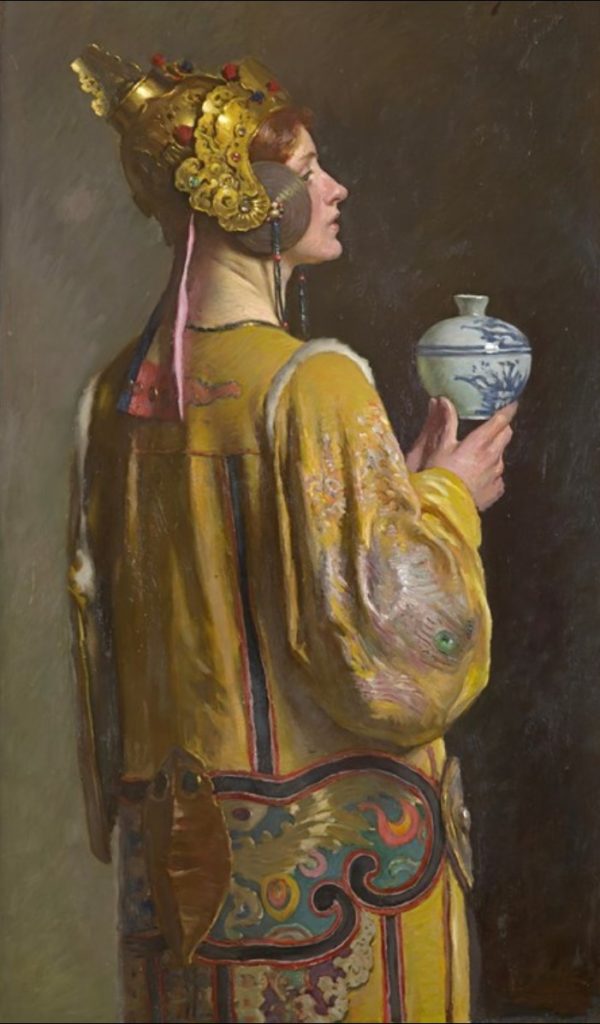
Antonin Picek – Teatime amusements
I really love the details in this work of art. Obviously the artist was a fine draftsman and then colored the work afterwards with thin washes of oils, layer after layer until the desired effects were achieved. I love the expressions on the faces, and the details on the woman’s dresses.
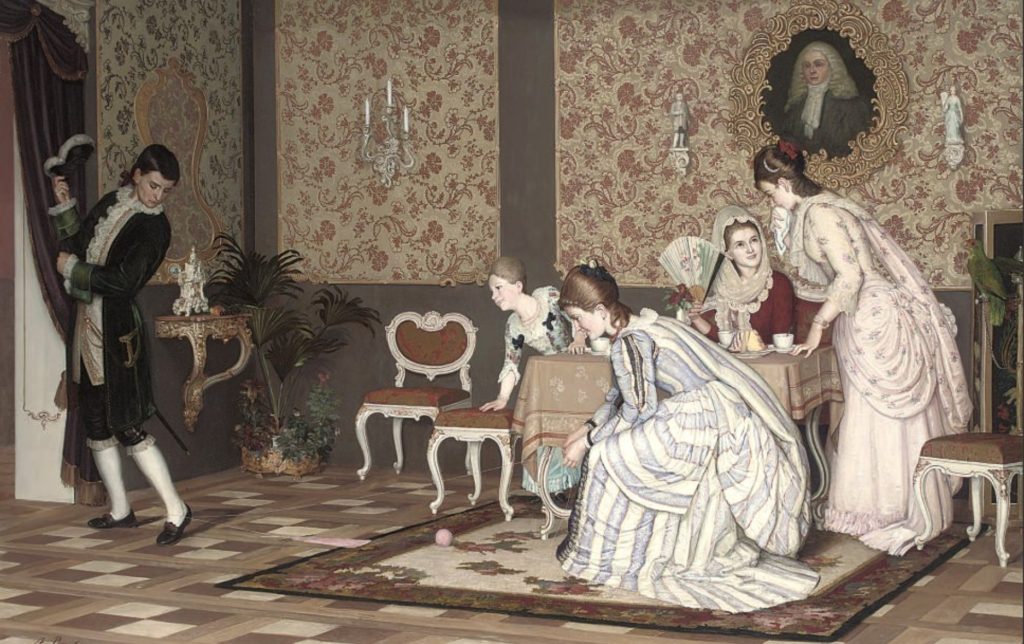
Marcus Stone – The Old Letters
Marcus was a Victorian Romanticist painter, history painter, illustrator and genre painter. He tries to convey snapshots of emotion in his works, and this painting is typical.
What I find so appealing in this painting are the details in the skirt. Just look at this masterpiece. It’s wonderful.
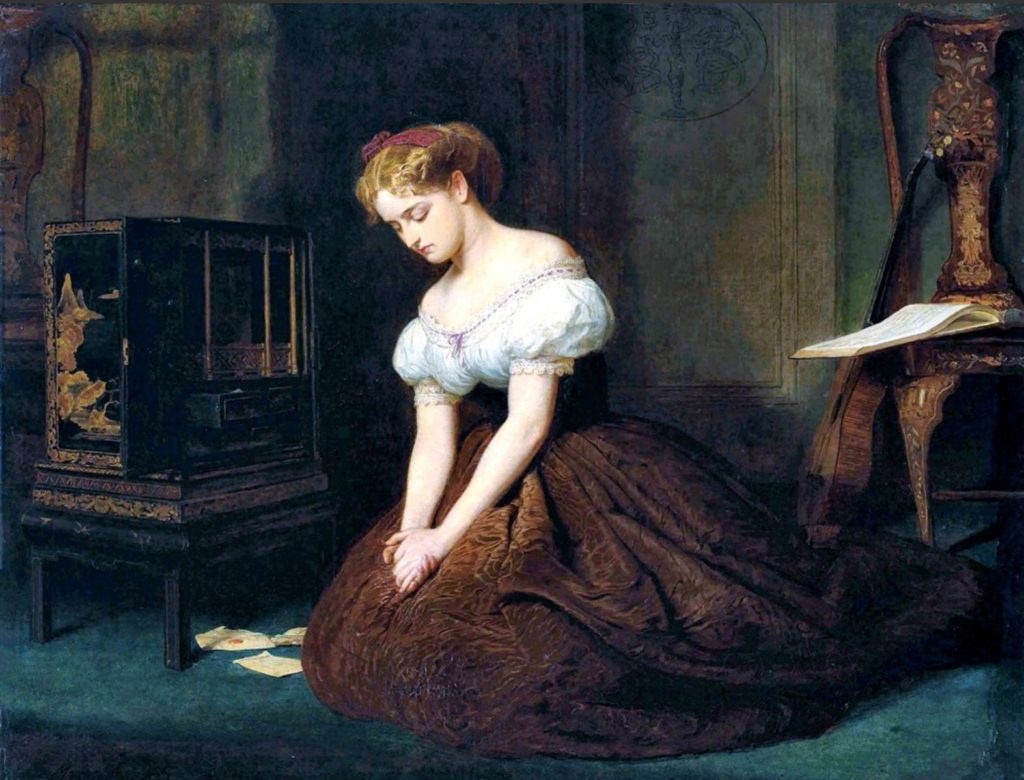
Julius Adam- Painter of kittens
I really love this artist because he loved to paint kittens.
Anyone who can manage to paint kittens, those forever moving bundles of fur, is an expert in my book. Only seven paintings of his survive. The rest were destroyed during World Wars I and II.
He was a German painter, and his works certainly ended up in many a fine home that was later bombed into oblivion by the Allied forces in the 1940’s.
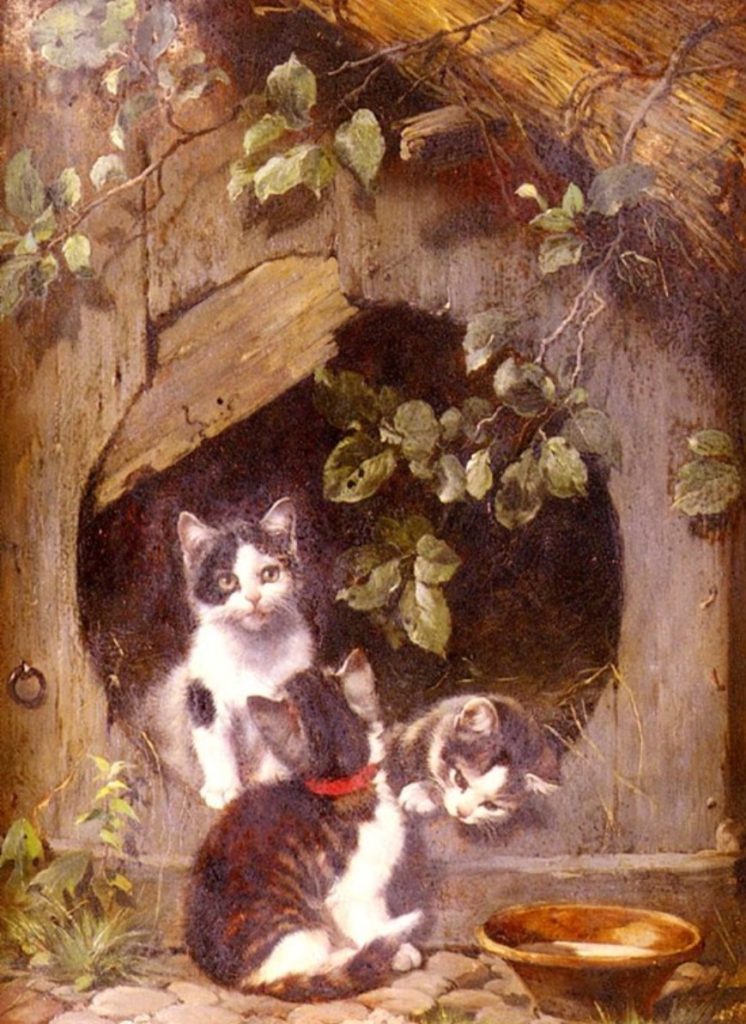
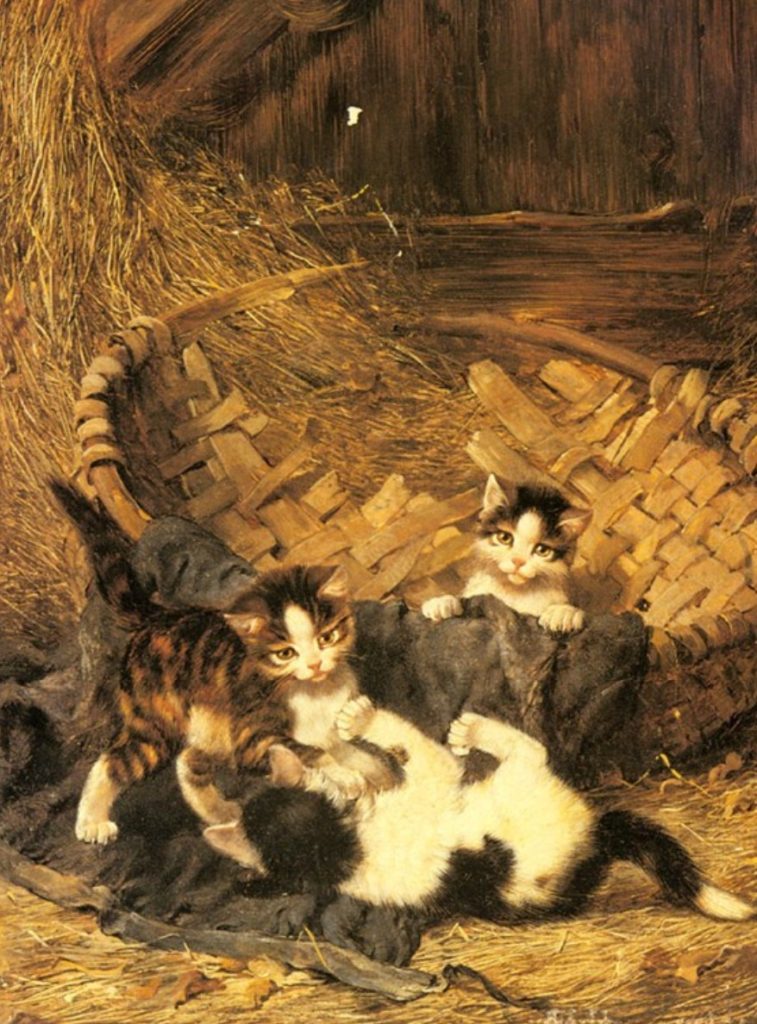
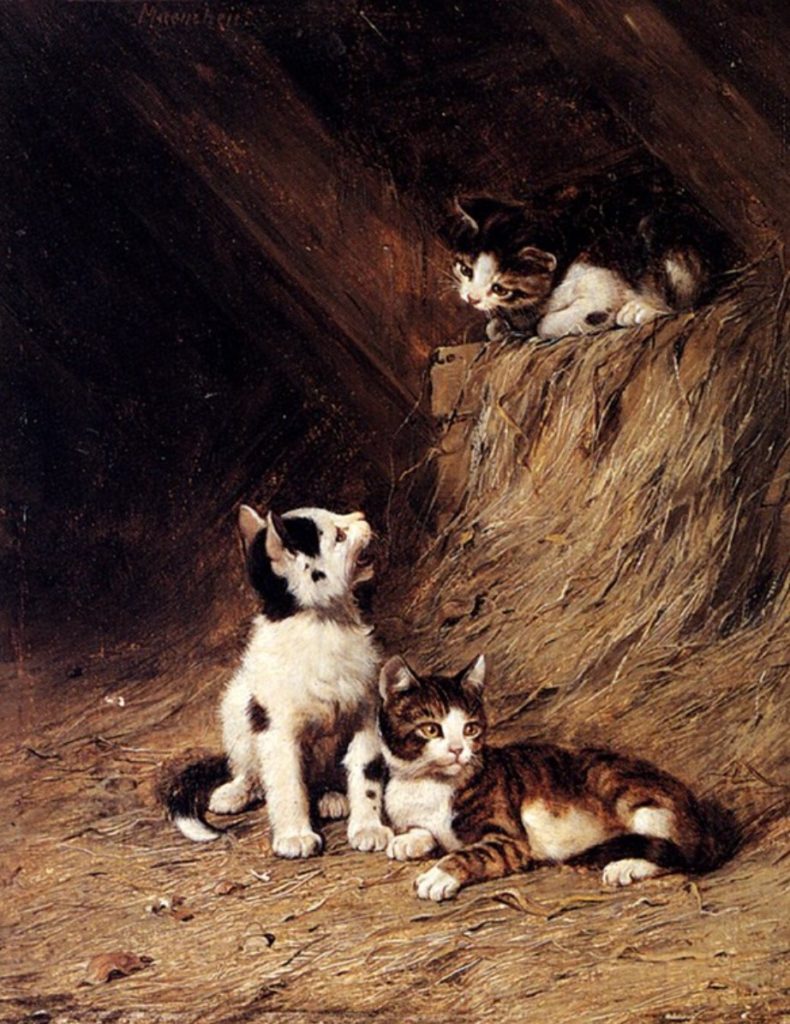
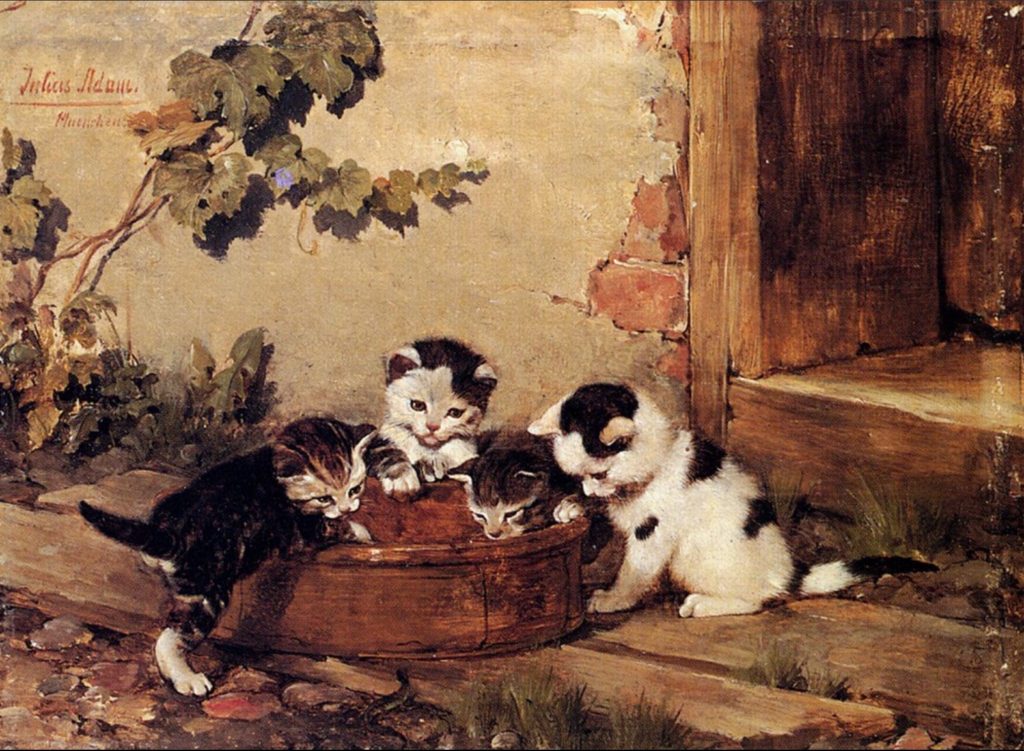
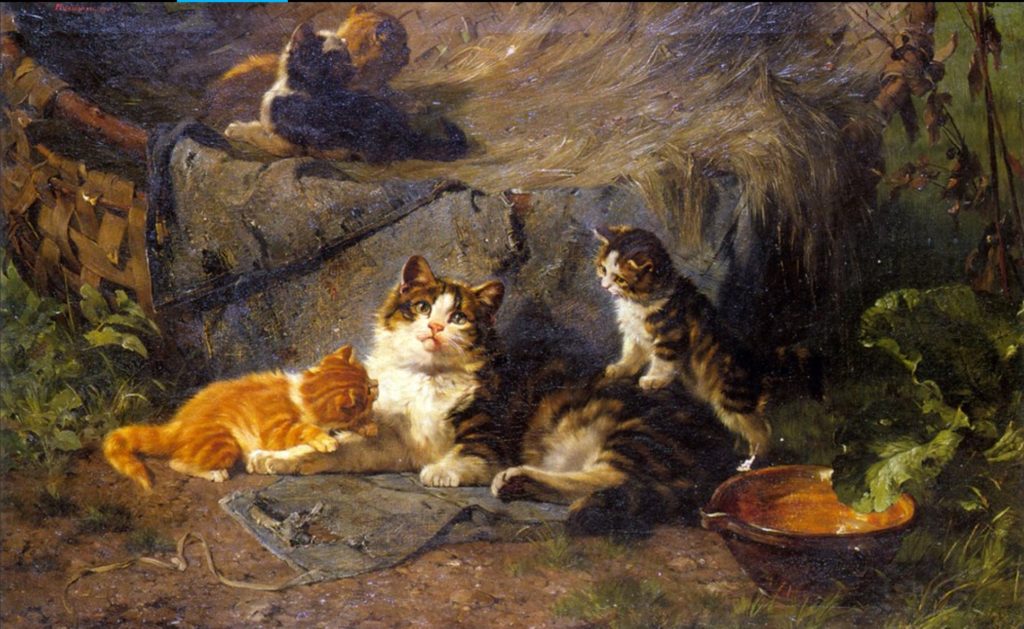
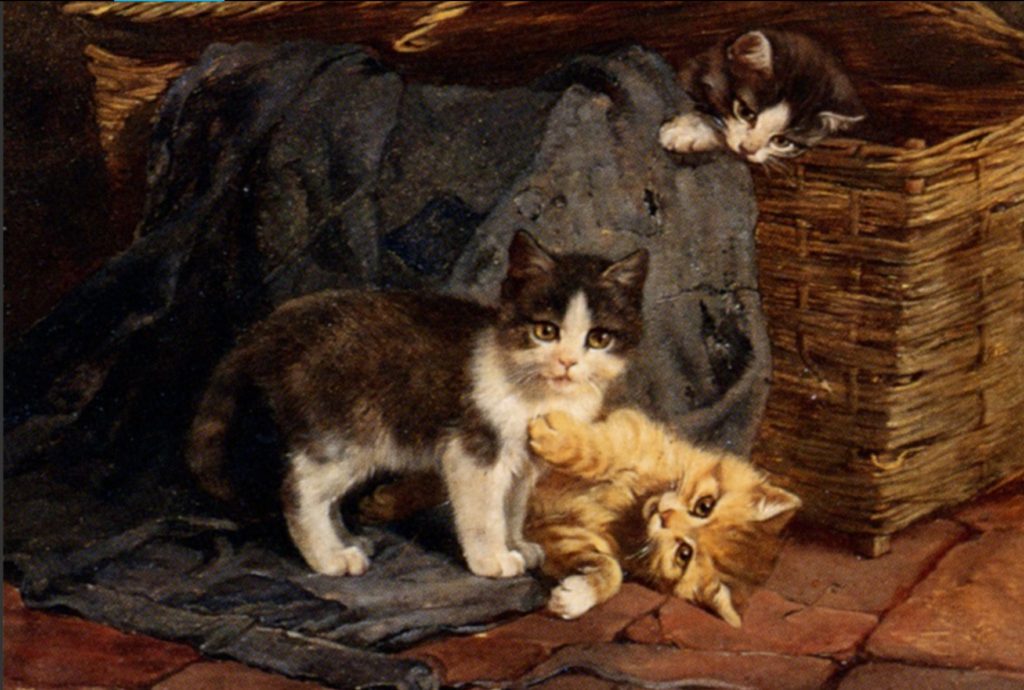
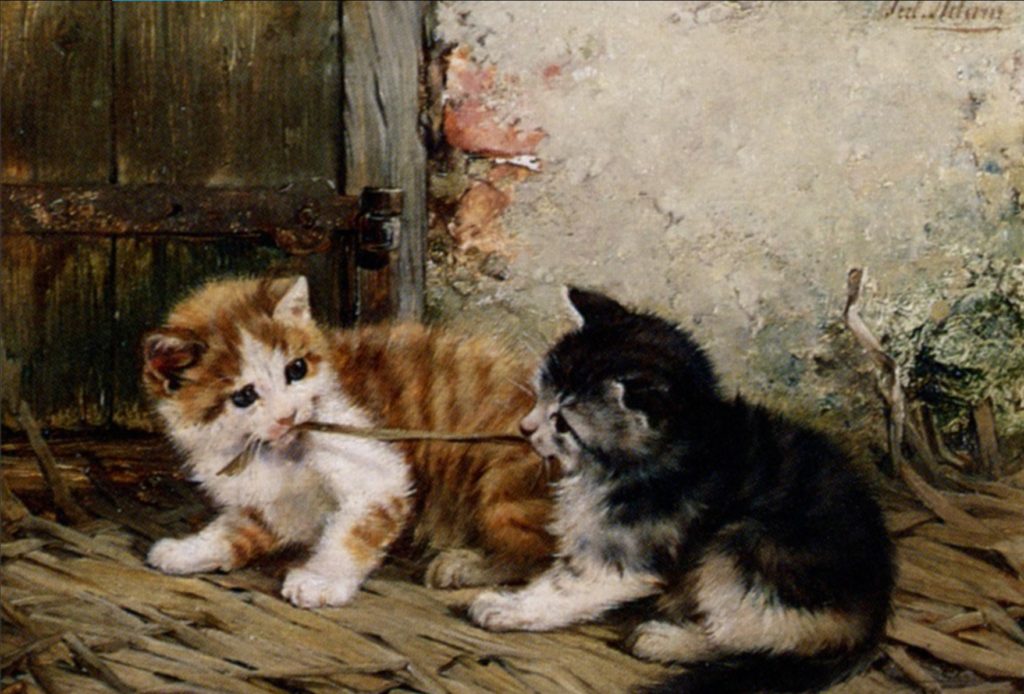
The paws and tail detail are exquisite.
Oswald Achenbach – Fireworks in Naples
I am not usually a fan of landscapes. They tend to be calming to the point of blandness. However, Oswald here has some nice works that would really look nice in a hallway or in a living room or study.
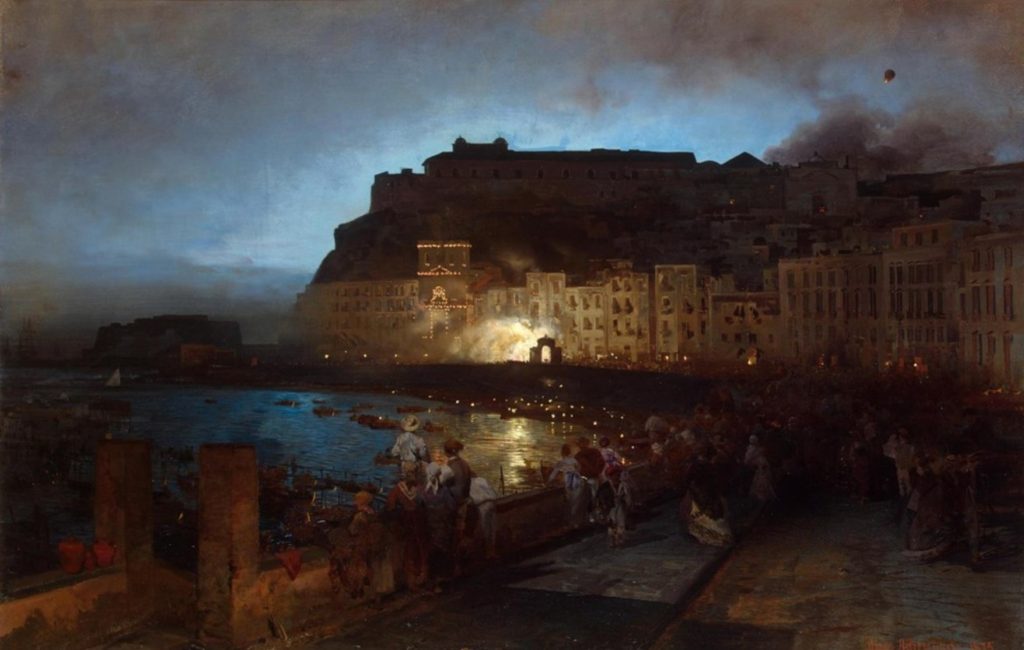
That’s nice. Here’s a rather nice study of a tree in a wooded glade…
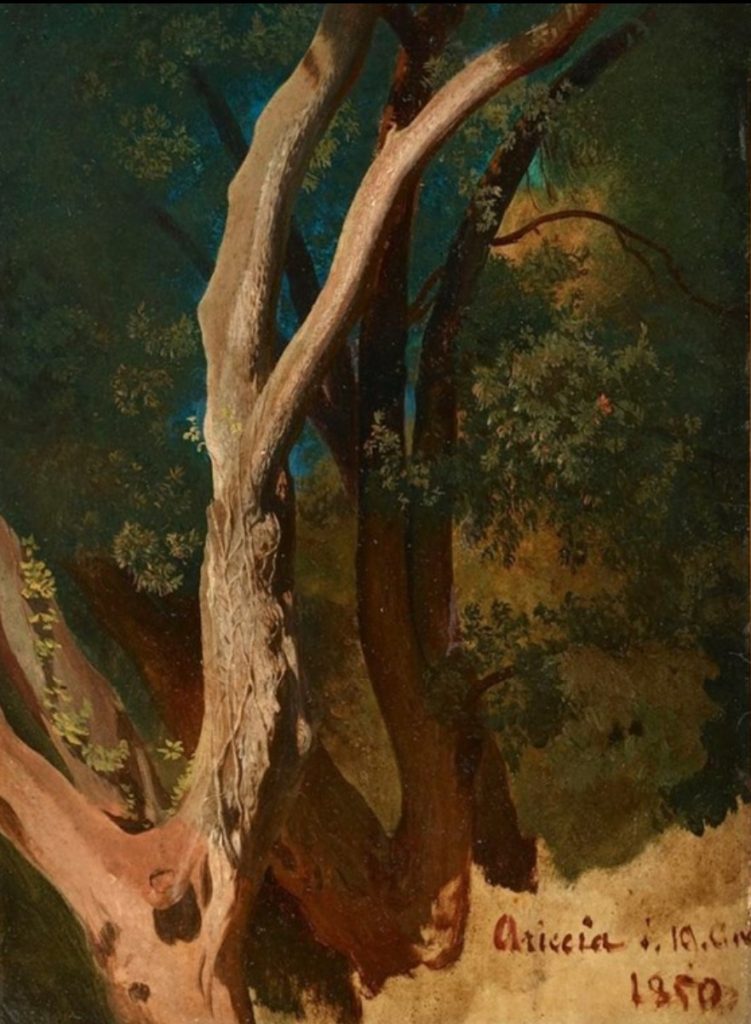
And this one depicts a Shepard and his flock… look closely, the figures are tiny, tiny, tiny.
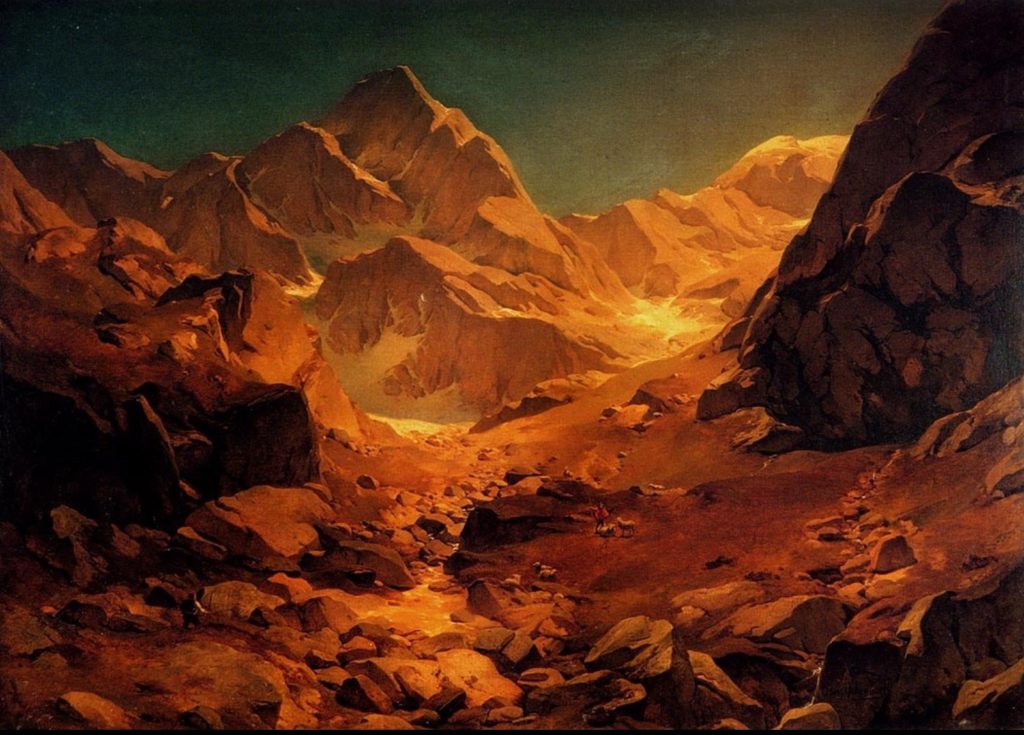
Edwin Austin Abbey – ‘O mistress mine, where are you roaming?’
Here’s a fine artist. He’s known as a Golden Age Illustrator painter, illustrator and muralist. Some of his works are just spectacular. Such as this one. Note that the young man is wearing red, a bright color to attract attention while the woman is a harlot as denoted by here green sleeves. You will note that a mistral is playing music in the background and the only thing missing is a bottle or jug of wine. All in all a very nice painting.
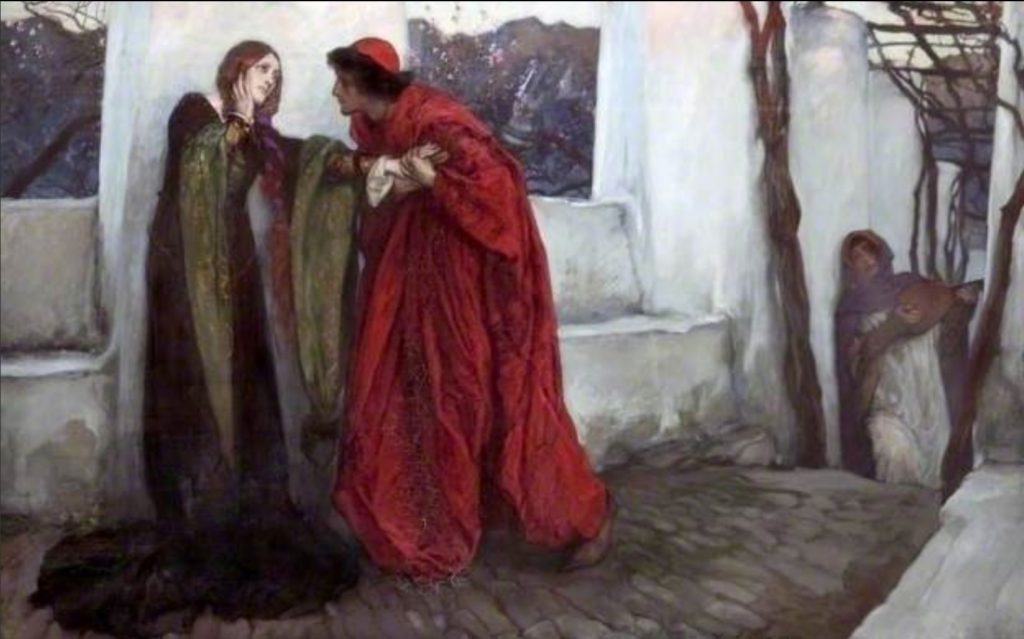
Another nice painting, and sorry for the embedded watermarks due to the screen capture.
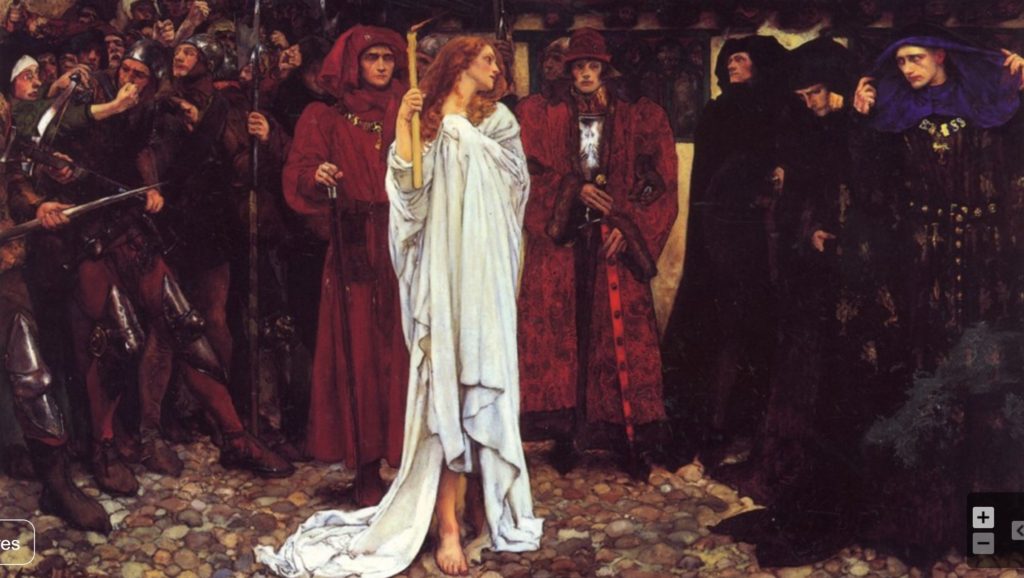
Eleanor Duchess of Gloucester was forced to undertake public penance and walk through the city of London without a hood, and bearing a lighted taper. Life imprisonment in various remote locations followed.
In July 1446 she was sent to Peel Castle (Manx: Cashtal Purt ny h-Inshey) on the Isle of Man (Mannin) in the north of the Irish Sea.
What was her crime?
Eleanor, Duchess of Gloucester, was a mistress and the second wife of Humphrey, Duke of Gloucester. A convicted sorceress, her imprisonment for treasonable necromancy in 1441 was a cause célèbre.
The Penance of Eleanor, Dutchess of Gloucester is an oil painting by Edwin Austin Abbey, finished in 1890. The painting is quite large, at 85″ wide and 49″ tall. It depicts Eleanor, former mistress, and now wife of the Duke of Gloucester, performing penance for her crime of consulting with sorcerers to help the Duke gain the throne.
Study
A “study” is where the artist makes a series of rough sketches of the idea for a painting. Some are very rough. Some are detailed drawings and paintings of various important aspects of the art. And some are beautiful in their own right. Here’s a perfect example of one by Edwin Austin Abbey. This one is with back and white chalk on a tan paper with high-lighted details in black ink by pen.
I personally think that it is awesome.
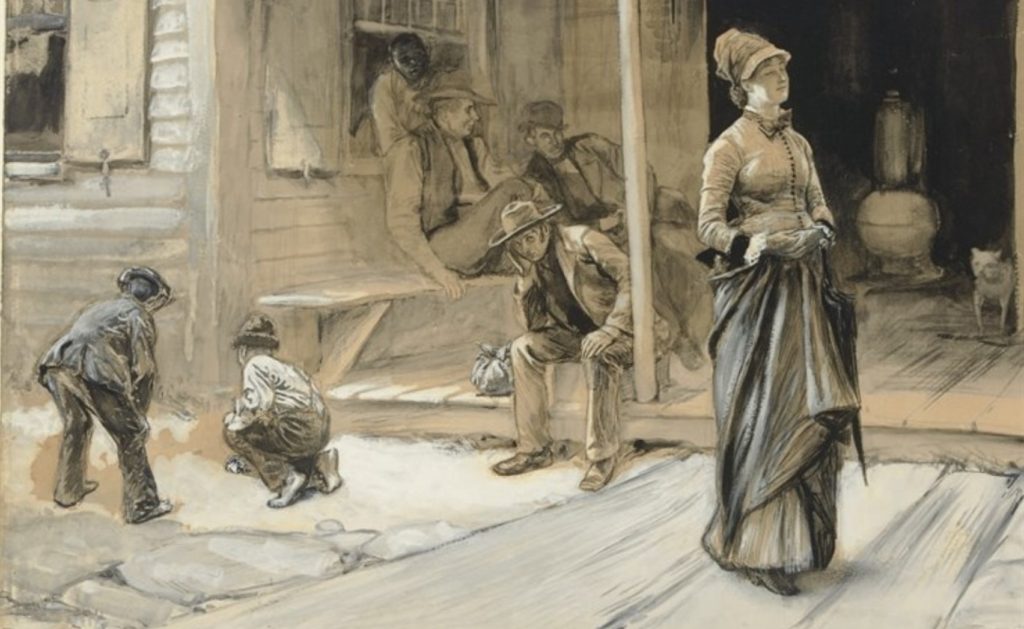
And here’s another one in Gouache. It’s a nice medium. Though I never had the opportunity to practice using this method.
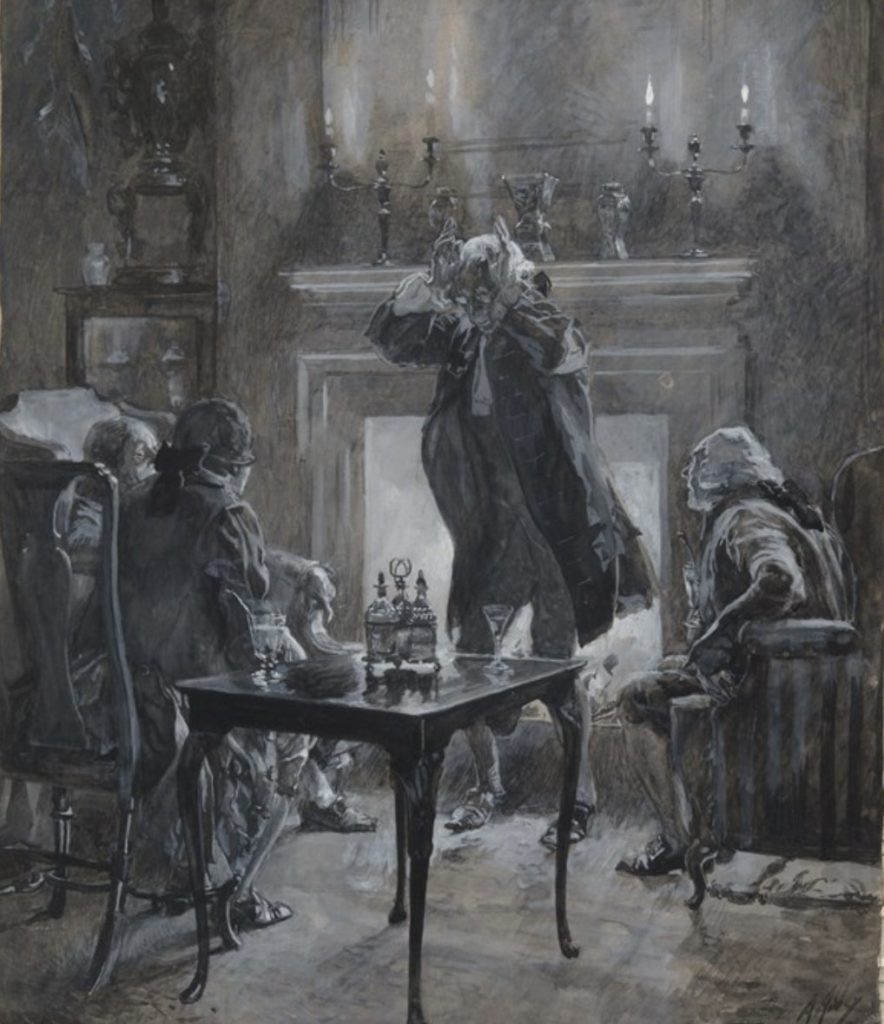
Conclusion
Did you know that almost every museum has one day that allows for free entry to the museum. This is most especially true for art museums. All you need to do is look up (Google) the local museums nearby and then go to their websites (they all have one). There are the times when they are opened and which days are free, and whether or not there are special events.
For instance, at the very expensive Pittsburgh Carnegie Museum of Art, they let people on food stamps enter for only a $1…
Present your Electronic Benefit Transfer card (EBT Card) from any state (Pennsylvania Access card, Ohio Direction card, West Virginia Mountain State card, etc.) and receive general admission for up to four people at $1 each at Carnegie Museums of Art and Natural History. Simply present your EBT Card along with a matching photo ID. This program is supported by BNY Mellon.
It’s a perfect opportunity to visit a local museum if you are unemployed and want some inspiration, or a good excuse to take a day off from work for you to make a date with your spouse of special friend.
You do not have to park at the site. You go to cheap parking and take a bus to the museum. All cities have bus stops near their museums and parks.
Hint. Hint. Hint.
Make a day of it. A nice ride, then a nice lunch. Then a visit to the museum, and finish up with a trip to an ice cream parlor for coffee and a sundae. Wouldn’t that be nice? I think it would be. We are so very used to doing our routines that life tends to pass us by. Don’t allow that. Go out and try to enjoy it.
A free trip to a museum, a coffee and a sundae, and maybe a blue plate special for lunch. How expensive can that be. And you know, in one week it’s going to be middle of October. This is a special golden time throughout most of the planet.
It will be a lovely day.
What a nice thing to plan. What a nice event you can generate. Make memories. Make friends. Enjoy yourself.
Do you want more?
I have more articles on art and art related interests please go here…
Art Index.
Articles & Links
Master Index.
- You can start reading the articles by going HERE.
- You can visit the Index Page HERE to explore by article subject.
- You can also ask the author some questions. You can go HERE to find out how to go about this.
- You can find out more about the author HERE.
- If you have concerns or complaints, you can go HERE.
- If you want to make a donation, you can go HERE.
.
.
.
.

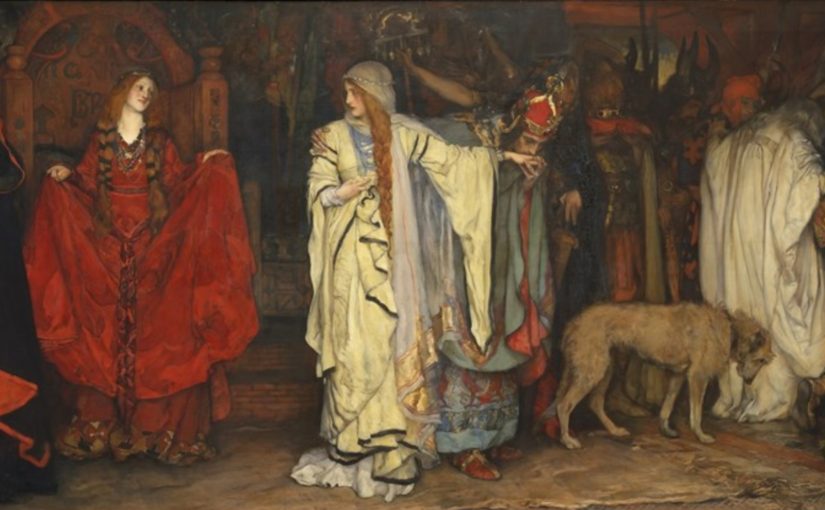

Have you ever heard of a Russian painter named Fyodor Dostoevsky? He was a painter from the late 1800s and ended up having a museum opened in honour of his works. He has a piece called The Student which is a spitting image of me in my early 20s, and I mean absolutely fucking identical right down to hair colour. That face I have seen in the mirror, many, many times before. I showed it to a mate and he reckoned it was such a close resemblance I could use it to shave. Dostoevsky is a legit good painter as well. he is very good at portraits
I will check him out.
@congjing yu keen to hear your opinion on his work in general
@Daegon Magus Thanks for the tip. I’m curious as well for obvious reasons:) @congjing yu Thanks for the art fix. Excellent examples.
Not to be pedantic, but Dostoyevsky was a writer – Brothers Karamazov, Crime & Punishment, etc
Maybe this is what you’re talking about ?
https://www.wikiart.org/en/mykola-yaroshenko/the-student-1881
Or maybe this ?
https://www.wikiart.org/en/ilya-repin/student-nihilist-1883
Not pedantic at all, sir. The wealth of information held in DM’s head may have possibly confused a name similar to Fyodor Dostoevsky. I would still like to see the image Daegonmagus is referring to though.